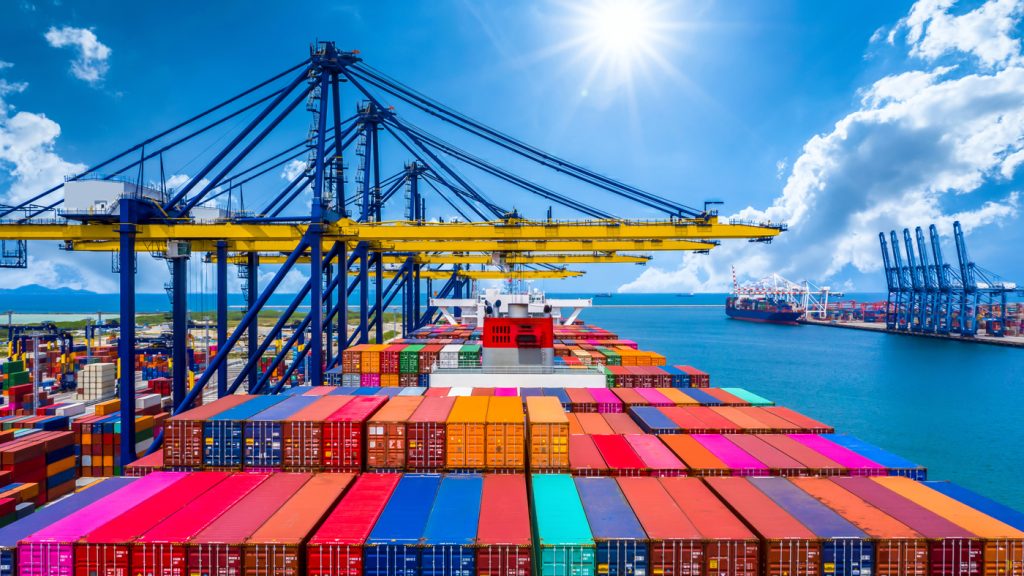Navigating turbulent waters
Navigating turbulent waters
The global container shipping industry is experiencing significant turbulence in 2024, with dramatic price fluctuations and shifting market dynamics. All hope isn’t lost, however.
Recent data from Container xChange, an online marketplace for container trading and leasing, reveals a complex interplay of factors affecting the industry. From unexpected price surges to cautious consumer behaviour, the container shipping market is navigating choppy waters as we’ve entered into the second half of the year.
Price surge in China amid early peak season
One of the most striking developments in recent months has been the volatile container trading market in China. Container xChange’s June container market forecaster highlights that May 2024 saw an astonishing 45% increase in average container prices for 12m high cube cargo-worthy containers across key Chinese ports. Prices jumped from US$2,240 in April to US$3,250 in May, a significant leap from the US$1,698 recorded in November 2023. However, these figures still pale in comparison to the peak prices of US$7,178 seen in September 2021 during the height of the Covid-19 pandemic’s impact on global shipping.
This price surge is primarily attributed to two factors: a significant lack of capacity and an unexpected increase in demand. The capacity shortage stems from ongoing disruptions in the Red Sea, which have forced carriers to stretch their networks thin. To maintain weekly sailings on Asia-Europe routes, carriers have had to deploy additional vessels, reducing their ability to effectively manage unexpected disruptions.
Furthermore, the diversions and subsequent “rebalancing” of carrier networks have led to downstream issues such as port congestion. Short-term changes in carrier schedules and “vessel bunching” have resulted in some ports experiencing spikes in throughput, creating bottlenecks similar to traffic jams on highways.

Demand spike: a double-edged sword
The industry is also grappling with an unexpected increase in demand for shipping capacity. This surge is not driven by robust economic growth or consumer spending, but rather by shippers pulling shipments forward to avoid potential future disruptions in the latter half of 2024.
“Shippers are pulling shipment dates forward, resulting in a temporary demand for shipping capacity. This is reflected in higher throughput volumes, despite underlying consumer demand and factory orders being weak,” explains Christian Roeloffs, co-founder and CEO of Container xChange.
“For instance, consumer spending in the US increased by only 2% in the first quarter of 2024, below the advance estimate of 2.5% and the lowest increase in three quarters. Also, retail inventories, excluding autos, in the US increased by only 0.3% month-over-month in April 2024, following a 0.4% decline in March 2024, indicating only cautious restocking by retailers.”
Despite these tepid economic indicators, major North American ports have reported significant year-on-year growth in inbound twenty-foot equivalent units (TEUs – a general unit of cargo capacity). The year-to-date comparison from 2024 to 2023 shows an average 18% increase in inbound TEUs. Key ports such as Los Angeles and Long Beach in California, and the Port of Vancouver in Canada, have reported impressive year-on-year growth rates ranging from 22.4 to 28.1%.
Short-term price bubble and industry sentiment
Roeloffs suggests that the current spike in container prices is likely unsustainable in the long term. The price surge is not backed by strong underlying demand, and concerns over labour markets and high interest rates indicate that consumers are likely to reduce spending in the near future.
This sentiment is reflected in the Container Price Sentiment Index (xCPSI) exhibiting significant volatility in its readings. The majority of container logistics professionals surveyed in May expect further container price hikes. This volatility is attributed to various factors – including the Iran-Israel conflict, evolving geopolitical economic trade relationships, and persistent climatic changes causing droughts – all of which are compelling businesses to fortify their supply chains.
Market outlook and future trends
As the industry looks ahead to the second half of 2024, Roeloffs anticipates a potential stabilisation or even a decline in container prices however.
“As the initial rush to restock inventories subsides and the real demand from consumers and businesses remains flat, we anticipate a stabilisation or even a decline in container prices in the mid-term. The market is showing signs of volatility driven by short-term factors, rather than a sustained increase in demand.”
Despite the turbulence, one thing remains certain. While the global economy continues to grapple with inflationary pressures, geopolitical tensions, and shifting consumer behaviours, the container shipping industry will always play a crucial role in maintaining the flow of global trade.
Published by
Jaco de Klerk
focusmagsa




